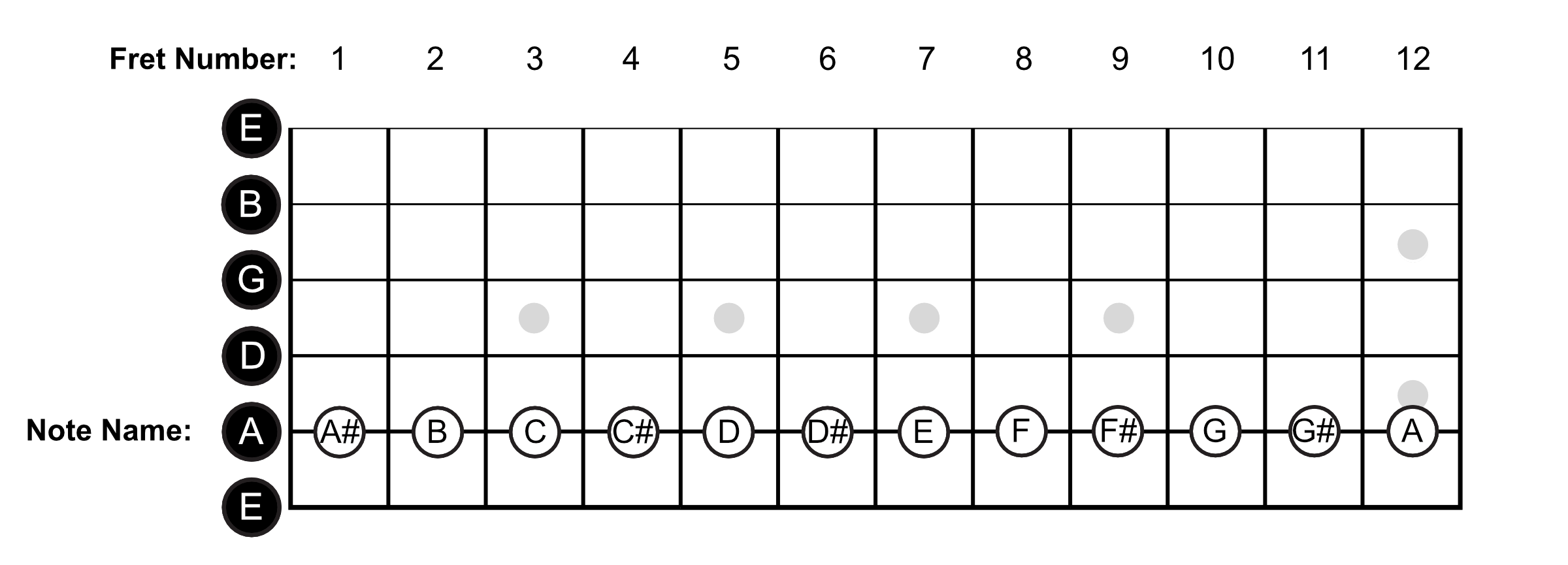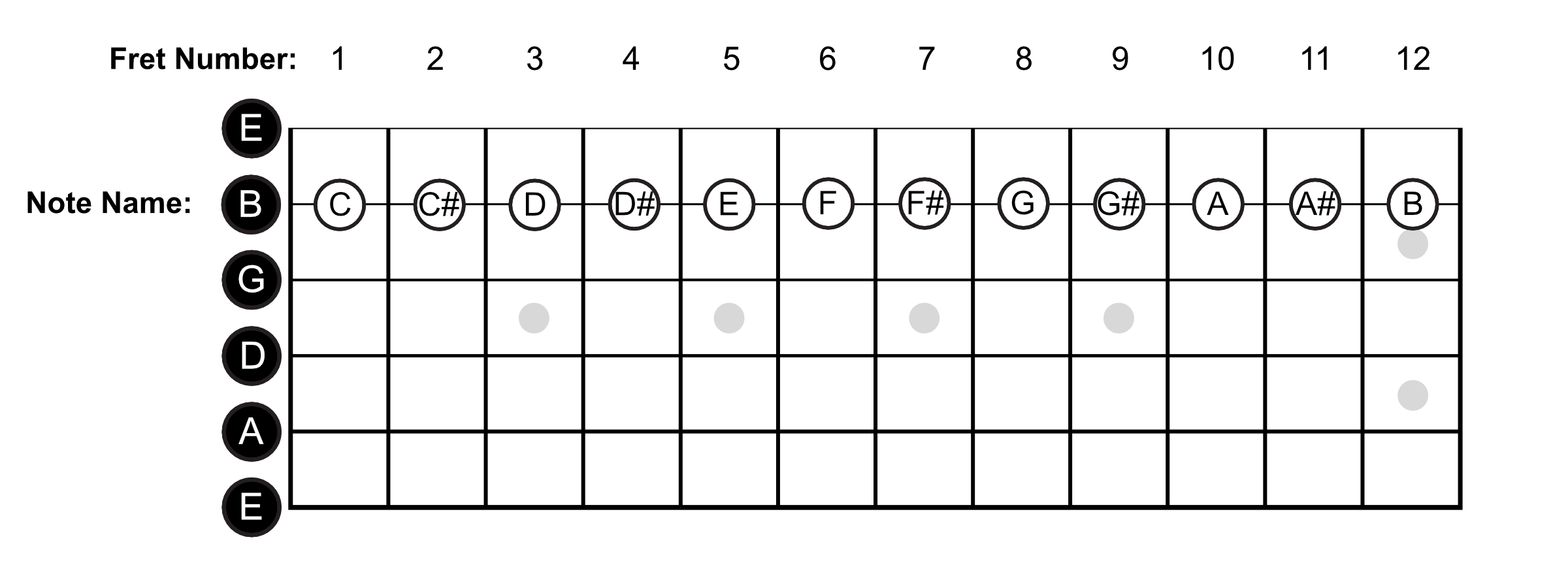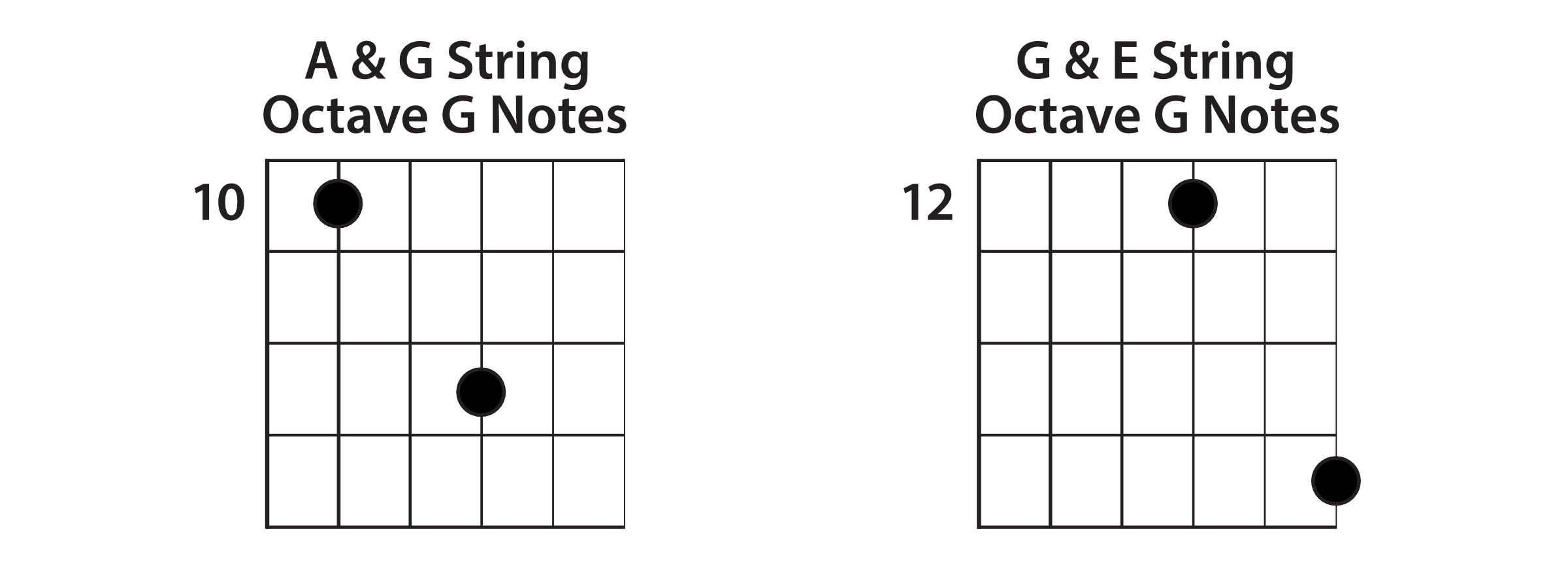One of the most important guitar lessons to master is learning the notes on the fretboard. Even if you don’t know chord placement, you can still find chords if you know where each note is. Don’t let the long fretboard scare you away. It’s far easier to learn the guitar fretboard than you might think. Luckily, a little practice and a few tricks make it easy.
When learning how to play guitar, you should know the musical alphabet is a little different than the alphabet you learned as a child. Learning notes starts with some basic music theory. With the natural musical alphabet, you only have seven notes – A, B, C, D, E, F, and G. They’re called natural since you have no flats or sharps. All your sharps and flats occur between these notes. Once you know these, learning sharps and flats is as simple as moving up or down.

Sharps and flats are just half-steps away from the natural notes. So what’s the big difference between the two? It’s all in how you move. Every half-step (or fret) changes the note.
Sharps are a half-step up from a natural note. For instance, a half-step above A is A#.
Flats are the exact opposite. One half-step down leads to a flat. For instance, if you step down from A, you’d get Ab. The confusing part comes into play with a single note has two names and the name depends mainly on the key you’re playing in. For instance, the note between D and E is D# if you’re stepping up and Eb if you’re stepping down.

Pro Tip: An easy way to keep your sharps and flats straight is to think of stepping on a bug. When you step down on the bug, it’s flat, just like notes on your guitar.
All natural notes have sharps and flats between them except BC and EF. A half-step between these leads to the next natural note. Stepping up from B leads you to C. Stepping down from F leads to E.
Using standard tuning, your strings are E, A, D, G, B, and E. If you played an open string, meaning you’re not holding down a note at any fret, those would be the notes played. This gives you a reference point to start learning. As you may notice, your high and low string are both E, meaning they’ll have the same notes, giving you less to memorize.

At this point, it’s a simple matter of counting up notes as you go along the fretboard. As you can see from the following fretboard images, the first fret is one half-step up from the string name or note. Just remember the BC and EF rule to keep your notes in order.
E Strings:

A String:

D String:

G String:

B String:

Now for the next trick in helping you learn the guitar fretboard. You only need to learn the first 12 frets as the notes begin repeating. For instance, look at the B String image above. On fret 12, the note becomes B again. Fret 13 would then be C, the same as fret 1. That’s much less to learn.
All you really have to learn is octave centers and your E and A strings. You can find any note on the fretboard just by referencing octaves on these strings. References are always two strings over. For instance, in the diagram below, you can see that we’re finding G on the D string by referencing its location on the E string. You could then use the D string to find notes on the B string.

In the same way, you could use your A string to find the notes on the G string, then the G string to find the notes on the high E string.

Now, it’s time to start learning those notes on your E and A strings. Get those down and you’ll quickly master the notes on the fretboard.
Are you looking for more lead guitar lessons and relevant jam-tracks? Guitareo is Nate Savage’s step-by-step video training system. It has some great songs for lead guitar and it also covers many other important styles of music including rock, country, fingerstyle, metal, classical, bluegrass, jazz, and more. Best of all it includes a huge library of original jam-tracks so you can apply everything to music.